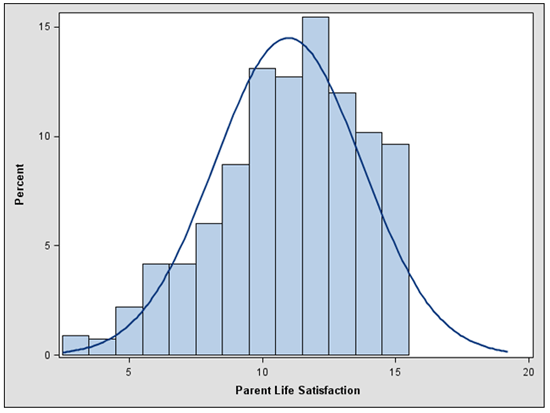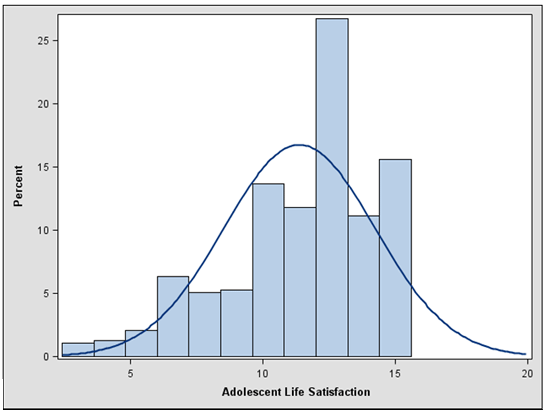Life Satisfaction
Definition
Children’s self-perception that they are happy with their life, and that their life is on the right track.
-
Overall life satisfaction
-
(Self-perception that) their life is on the right track
Parent Scale
Please indicate how much you agree or disagree. (Strongly agree, Somewhat agree, Neither agree nor disagree, Somewhat disagree, Strongly disagree)
-
My child wishes he/she had a different kind of life.
-
My child is happy with his/her life.
-
So far, my child feels that his/her life is working out as well as he/she could hope.
Parent Scale Psychometric Properties and Fit Indices
We conducted confirmatory factor analysis (CFA) to examine whether responses to the scale appeared to measure a single construct. Along with Cronbach’s alpha, we present model fit indices below.

-
Alpha=0.72 (good)
-
CFI=1.000 (excellent)
-
TLI=0.996 (excellent)
-
RMSEA=0.036 (excellent)
Adolescent Scale
Please indicate how much you agree or disagree with the following statements. (Strongly agree, Somewhat agree, Neither agree nor disagree, Somewhat disagree, Strongly disagree)
-
I wish I had a different kind of life.
-
I am happy with my life.
-
So far, my life is working out as well as I could hope.
Adolescent Scale Psychometric Properties and Fit Indices

-
Alpha=0.80 (excellent)
-
CFI=1.000 (excellent)
-
TLI=0.996 (excellent)
-
RMSEA=0.036 (excellent)
Subgroup Model Fit
We tested the final adolescent and parent models with subgroups to examine whether the model fit for different subsets of respondents in the same manner as the overall sample. Using the same fit statistic requirements as the overall models, a check mark indicates that the model fit for the subgroup. Due to relatively small sample sizes and sparse categorical responses, resulting in too many bivariate empty cells, we were not able to fit all of the models. The subgroups for which we were not able to fit a model are indicated with N/A. Household income is defined as “low” if it is less than the median income in the sample. “High” household income indicates that the household income was equal to or greater than the sample’s median.

Concurrent Validity
Four single item measures were used to examine the concurrent validity of the adolescent scale: a measure of social behavior (fighting), a measure of health behavior (smoking), a measure of emotional health (adolescent-reported depressive symptoms), and a measure of cognitive development (grades).
Concurrent validity was examined in two ways: with bivariate and multivariate analyses. The table below presents the results of multivariate analyses, which control for: teen gender, teen age, teen race, household income, household size, parental education, parental marital status, parental home ownership, parental employment, and metropolitan area and region of residence. The beta coefficient of the relationship between the construct’s scale and outcome is presented.

The graphs below show the bivariate relationships between the adolescent scale and outcomes. Results are presented for relationships that were at least moderately significant (at the 0.10 level) in the multivariate analyses. Note that the y axis scales are different in each graph.

© Copyright 2024 ChildTrendsPrivacy Statement
Newsletter SignupLinkedInYouTube